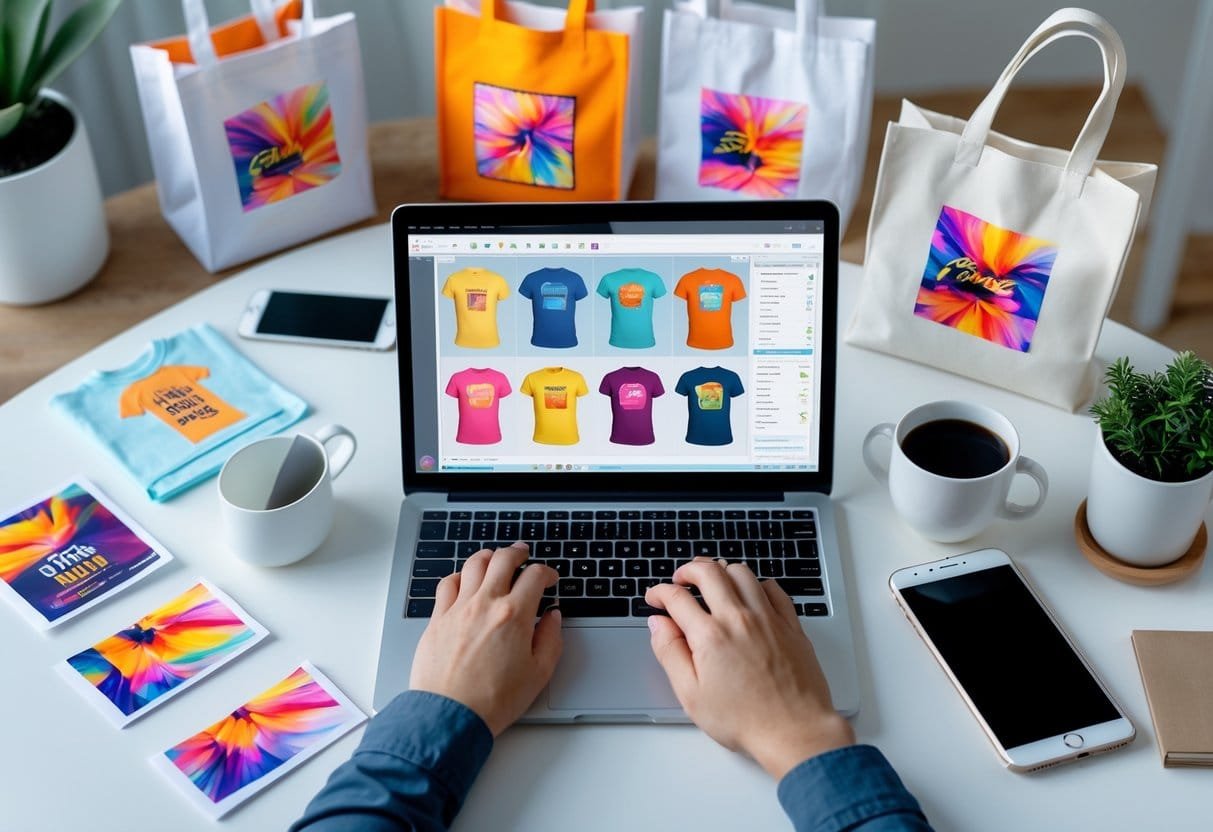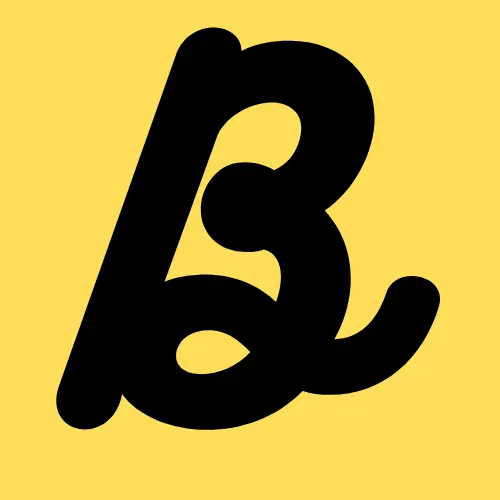Guide to Starting a Print on Demand Business
Starting a print on demand business offers a low-risk way to enter eCommerce without needing to hold inventory or invest heavily upfront. In this model, products are made and shipped only after a customer orders them, which eliminates the need for storage and reduces financial risks. This makes it an ideal option for anyone looking to build a flexible online business with minimal startup costs.

Success in print-on-demand depends on carefully choosing a niche and products that appeal to a target audience. Equally important is creating unique designs that stand out in the crowded market. Setting up a smooth online store and partnering with a reliable print provider are key steps that help ensure good customer experiences and timely order fulfillment.
Marketing plays a crucial role in attracting customers and growing the business over time. Understanding how to promote products through social media, influencers, and paid ads can boost visibility and sales. With the right approach, print-on-demand can become a steady source of income or a full-time venture.
Key Takeaways
- Choosing a clear niche and unique products helps target the right customers.
- Using dependable print providers ensures quality and on-time delivery.
- Effective marketing strategies are essential to attract and keep buyers.
Understanding the Print on Demand Model

The print-on-demand business model allows sellers to offer custom products without holding inventory. It handles production, packaging, and shipping only after a customer places an order. This process reduces upfront costs but has trade-offs in profit and control.
What Is Print on Demand?
Print on demand (POD) is a method where products are printed and shipped only once ordered. Sellers create and upload designs to a platform, which applies these designs to items like T-shirts, mugs, or phone cases.
This model removes the need to buy or store inventory. Sellers do not pay for products until customers purchase them. It suits artists, entrepreneurs, and anyone wanting low-risk entry into ecommerce. The POD platform manages order fulfillment, including printing, packing, and shipping, keeping the process simple for the seller.
Benefits and Drawbacks
Print on demand offers low startup costs since no inventory is needed upfront. Sellers avoid warehousing and packaging work because the platform handles fulfillment. This makes scaling easier as each order triggers new production without extra effort or stock risks.
However, POD has lower profit margins because fulfillment fees and platform costs reduce earnings per item. Sellers have limited control over product quality since manufacturing is outsourced. Shipping times tend to be longer than holding stock, which can affect customer satisfaction. These factors require balancing ease of use with realistic expectations about margins and delivery.
How the Print-on-Demand Business Works
Starting a POD business begins with creating or sourcing unique designs. Sellers select products to apply their designs on, such as apparel or accessories, then upload them to a POD platform connected to an online store.
When a customer purchases, the order details go to the print-on-demand provider. The provider prints the design, packs the product, and ships it directly to the buyer. Sellers receive payment automatically through integrated systems like PayPal or Shopify Payments.
Sellers track orders and sales via dashboards but do not handle physical products. Marketing and customer service remain their responsibility to grow the store and increase revenue.
Choosing Your Niche and Products

Choosing the right focus and products is key to success in print-on-demand. Defining a clear market and matching products ensures better customer appeal and less competition. Careful selection helps build a unique, profitable store.
Identifying Profitable Niches
A niche is a specific group of customers or a themed product area. Finding a profitable niche means locating a market with demand but manageable competition. Niches like fitness gear, pet lovers, or eco-friendly products are popular in print-on-demand.
Research trending items on platforms like Amazon, Etsy, and TikTok. Use tools like Google Trends to check interest over time. Choosing a niche connected to a clear audience helps with marketing and design choices.
Passion can guide niche choice, but it must also show sales potential. A niche with loyal customers who seek custom products offers better chances for repeat sales and brand growth.
Selecting Print-on-Demand Products
Product choice should fit the niche and meet customer needs. Popular print-on-demand items include t-shirts, hoodies, mugs, stickers, and tote bags. Unique products like phone cases or pint glasses can stand out but may need more targeted marketing.
Consider product quality, production costs, and shipping times when selecting items. High-quality items improve customer satisfaction and encourage repeat business. Choose print providers known for reliable fulfillment and good product standards.
Products must allow space for creative custom designs. Items with visible areas for logos or graphics work best. This helps create a strong brand identity aligned with the niche’s style and customer preferences.
Validating Your Product Ideas
Before fully committing, testing product ideas reduces risk. Sharing designs on social media or forums can gather feedback and gauge interest. Early validation avoids spending time and money on products that don’t sell.
Ordering samples from print-on-demand suppliers lets entrepreneurs check print quality and product feel. This ensures the final product meets customer expectations.
Tracking competitor sales and reviews reveals which products work best in the niche. Adjusting designs and product types based on buyer feedback improves chances of success. Validation keeps the store focused on what customers want.
Creating Compelling Designs

Creating designs that attract customers is essential in a print-on-demand business. The right tools and design choices can make custom products stand out. Thoughtful design decisions help ensure the final product meets quality standards and appeals to target buyers.
Design Tools and Resources
Choosing the right design tools is important for producing clear, print-ready files. Beginners often start with Canva because it is free, easy to use, and offers many templates and graphics. For more advanced users, Photoshop provides detailed control but requires experience. Print-on-demand platforms like Printful also offer built-in tools to create and adjust designs directly for their products.
Free resources such as stock images, vectors, and clipart can be useful. It’s critical to use only images allowed for commercial use and avoid copyright issues. Some creators hire designers if they want custom work but lack design skills.
Best Practices for Product Design
Designs must fit the type of custom products they will be printed on. For example, large, bold graphics work well on t-shirts but not on small items like hats. Colors should be bright enough to show clearly after printing.
Sticking to product print guidelines, like DPI (dots per inch) and safe print areas, prevents low-quality results. Business owners should test designs on multiple products and order samples to check real-world print quality before selling.
Keeping the target audience in mind when choosing fonts, colors, and style makes designs more appealing and effective.
Setting Up Your Online Store

Creating an online store requires choosing the right platform, designing an easy-to-navigate storefront, and including important pages that build trust and provide clear information. Each step shapes how customers experience the brand and affects overall sales.
Choosing an Ecommerce Platform
Selecting the right ecommerce platform is key to managing products, orders, and customer interactions smoothly. Popular options include Shopify, WooCommerce, and Etsy.
Shopify is a popular choice for beginners and experts. It offers easy setup, strong integration with print-on-demand services, and built-in payment processing. Shopify handles hosting, security, and site speed, but there are monthly fees.
WooCommerce is a free plugin for WordPress, offering flexibility and control. It suits those familiar with WordPress and who want to customize deeply. However, this requires managing hosting and updates.
Etsy is a marketplace, not a standalone store. It provides access to millions of buyers, reducing the need for marketing but limits branding control and charges transaction fees.
Choosing depends on technical skill, budget, and long-term goals.
Designing Your Storefront
A clean and professional storefront encourages shoppers to browse and buy. It should reflect the brand’s style and be easy to use on both desktop and mobile.
Start with a simple layout that highlights featured products. Use consistent colors, fonts, and images that match the niche. Clear product photos and concise descriptions help customers understand what they are buying.
Navigation menus must be visible and straightforward. Group products into logical categories. Fast loading times and mobile responsiveness are essential, as many customers shop on phones.
A well-designed storefront builds trust and reduces the chance visitors leave without purchasing.
Essential Store Pages
Certain pages are necessary to give customers confidence and support smooth transactions.
- Home page: Clear brand message, featured products, and promotions.
- Product pages: Detailed descriptions, price, size charts, and quality photos.
- About page: Information about the brand’s story and mission.
- Shipping & Returns: Transparent policies about delivery times, costs, and how to return items.
- Contact: Easy ways for customers to get help or ask questions.
Including these pages helps reduce buyer hesitation and improves the shopping experience.
Selecting a Print-on-Demand Supplier

Choosing the right print-on-demand supplier impacts product quality, shipping speed, and how smoothly a store operates. Factors like pricing, fulfillment, and how well the supplier works with ecommerce platforms play key roles in customer satisfaction and business efficiency.
Comparing Print-on-Demand Services
When comparing print-on-demand services, focus on product range, pricing, and shipping options. Printful and Printify are two popular options, each offering a large variety of products from apparel to accessories. Printful tends to provide slightly higher prices but with more consistent quality control.
Shipping locations matter greatly. A supplier with fulfillment centers near your main customer base will cut delivery times and costs. For example, a US-based seller should consider Printful’s US hubs to ensure faster delivery.
Look for any hidden fees, such as setup costs or charges for custom branding. Comparing these costs side by side helps avoid surprises that can reduce profit margins.
Evaluating Print Quality and Fulfillment
Print quality is crucial to customer satisfaction. Sellers should order sample products to check the sharpness of prints, fabric quality, and durability. Printful is known for higher-quality prints, while Printify works through multiple print providers, which can vary in quality.
Order fulfillment speed also affects reputation. Reliable suppliers process and ship orders within 2-5 business days. Delays can cause negative reviews and lost customers. Check if the supplier offers tracking and handles returns efficiently.
Customer service is another part of fulfillment. Quick, helpful support ensures issues like misprints or lost orders are resolved without hurting the seller’s brand.
Integration with Ecommerce Platforms
Smooth integration with ecommerce platforms boosts efficiency. Most print-on-demand services connect easily with major platforms like Shopify, WooCommerce, and Etsy.
Suppliers like Printful offer plug-and-play apps for these platforms. This means orders flow automatically to the supplier when customers buy, reducing manual work and errors.
Real-time updates on inventory and order status help sellers manage listings and customer support. Sellers should check if the print-on-demand service supports their store’s platform and if the integration includes features like automatic tracking notifications.
Good integration saves time and makes scaling the business easier.
Launching and Managing Your Print on Demand Business

Starting a print on demand business requires clear steps to build product listings, handle orders, and set prices to ensure steady profits. Careful attention during each phase can help maintain smooth operations and good customer satisfaction.
Creating Product Listings
Product listings should be clear and detailed to attract buyers. Each listing needs a strong title that includes key product features. Use high-quality images showing different angles and color options when available.
Descriptions must explain the material, size options, and design details clearly. Highlight the benefits, such as durability or unique artwork. Use bullet points to make the information easy to scan.
Include accurate product tags and keywords to improve search visibility. Organize your store logically so customers can quickly find products by category or theme.
Order Fulfillment and Customer Service
Print on demand businesses rely on third-party suppliers to print and ship orders automatically after a sale. The business owner must monitor the supplier’s performance to ensure timely production and delivery.
Facing any delays or quality issues, the owner should communicate promptly with customers. Providing tracking information and clear responses builds trust.
Customer service also includes handling returns or refunds fairly. Offering friendly, quick support encourages repeat business and positive reviews, vital for growth.
Pricing and Profit Margins
Setting the right price balances customer appeal and profit. The base product cost from the print provider plus shipping fees should be calculated first.
Add a markup that covers operating expenses while keeping prices competitive. Use this simple formula:
| Cost Components | Example |
|---|---|
| Product base cost | $10 |
| Shipping | $5 |
| Desired profit margin (%) | 30% |
| Final Price | $19.50 |
Regularly review prices based on costs and competitor pricing. Testing different price points can reveal the best balance between sales volume and profit.
Marketing Strategies for Growth

Effective marketing is essential for growing a print-on-demand business. It involves improving visibility, reaching the right audience, and encouraging purchases. Key methods include optimizing the online store to attract free traffic, using social media platforms and influencers to connect with customers, and employing targeted paid ads to increase sales.
SEO for Print on Demand Stores
SEO helps a print-on-demand website rank higher in search results. This brings organic visitors who are interested in the products. Owners should start with keyword research to find terms customers use, focusing on low competition and relevant phrases like “custom printed t-shirts” or “unique mugs.”
Product pages need clear descriptions with those keywords placed naturally. Adding descriptive alt text to images improves search rankings and accessibility. Site speed also matters; a faster site keeps visitors and gains better Google rankings.
Regularly updating the store and creating content such as blog posts can attract more organic traffic. SEO is a long-term strategy but critical to sustained growth.
Social Media and Influencer Marketing
Social media platforms like Instagram, TikTok, and Facebook are vital for a POD online store to showcase designs and build an audience. Posting engaging content — including behind-the-scenes looks, customer photos, and lifestyle images — helps connect with followers.
Collaborating with influencers or micro-influencers offers access to niche communities. These partnerships feel more authentic and can convert followers into customers. Choosing influencers whose style fits the brand’s identity increases trust.
Scheduling consistent posts using tools like Buffer or Later helps maintain regular engagement. This approach grows the brand and encourages sales through genuine connections.
Paid Advertising Basics
Paid ads are a quick way to boost visibility and sales for a print-on-demand business. Platforms like Facebook Ads and Google Ads allow businesses to target specific audiences based on interests, behaviors, and location.
Creating ads with strong headlines, eye-catching images, and clear calls-to-action improves click-through rates. Testing different ads and adjusting targeting helps find what works best. Using retargeting ads can bring back visitors who didn’t purchase initially.
To stay profitable, it’s important to set budgets and monitor ad performance regularly. Paid advertising complements other marketing efforts by driving faster results.
Frequently Asked Questions
What are the initial steps to launching a print on demand business for beginners?
Beginners should start with market research to find a niche and understand customer needs. Next, they choose products to sell and write a simple business plan. Setting up an online store and selecting a print-on-demand platform come after these foundational steps.
Can you start a print on demand business with no startup capital, and if so, how?
It is possible to start with little to no money by using free design tools and platforms with no upfront fees. Leveraging marketplace options like Etsy or Amazon can reduce costs. However, budgeting some funds for marketing and sample products improves chances of success.
What equipment and resources do I need to start a print on demand business from home?
A computer or laptop and internet connection are essential. Design software or access to freelance designers helps create product images. Print-on-demand platforms handle printing, inventory, and shipping, so no manufacturing equipment is needed.
How can I create a business plan tailored to a print on demand venture?
A good plan includes defining the target audience, choosing niches, and outlining marketing strategies. It also covers financial needs, pricing models, and goals for growth. Legal structure, such as registering an LLC, can protect personal assets and should be part of the plan.
Are there any comprehensive step-by-step guides for setting up a print on demand business?
Several guides are available that walk through each step—from market research to launching and marketing the store. These guides also cover choosing platforms, product design, and managing customer service. They serve as practical roadmaps for beginners.
What factors contribute to the profitability of a print on demand business for newcomers?
Profitability depends on setting competitive prices, managing costs, and choosing popular, high-demand products. Marketing efforts to attract and retain customers also affect earnings. Lower startup costs and no inventory risks make print on demand accessible but require ongoing effort to build profits.







